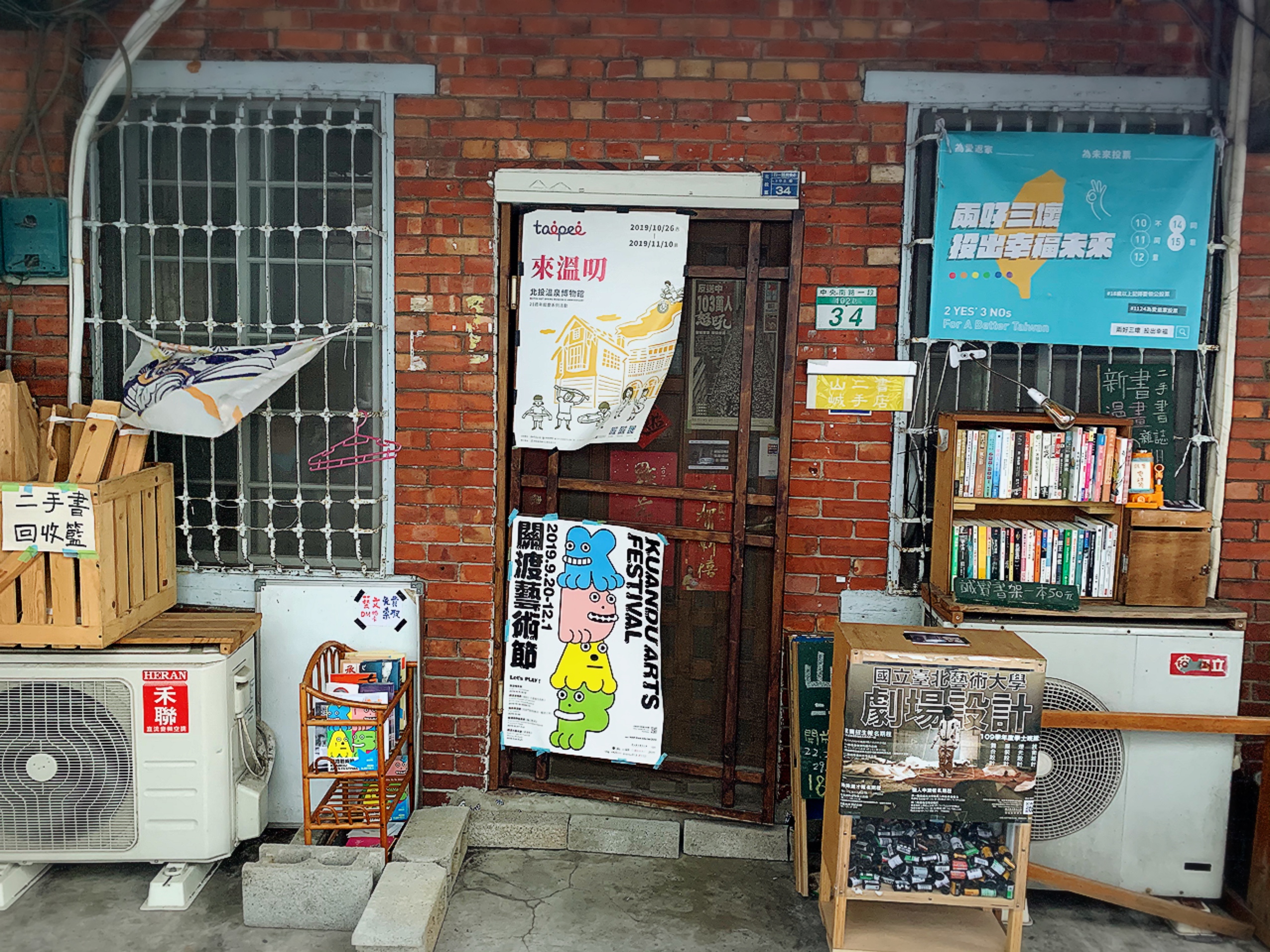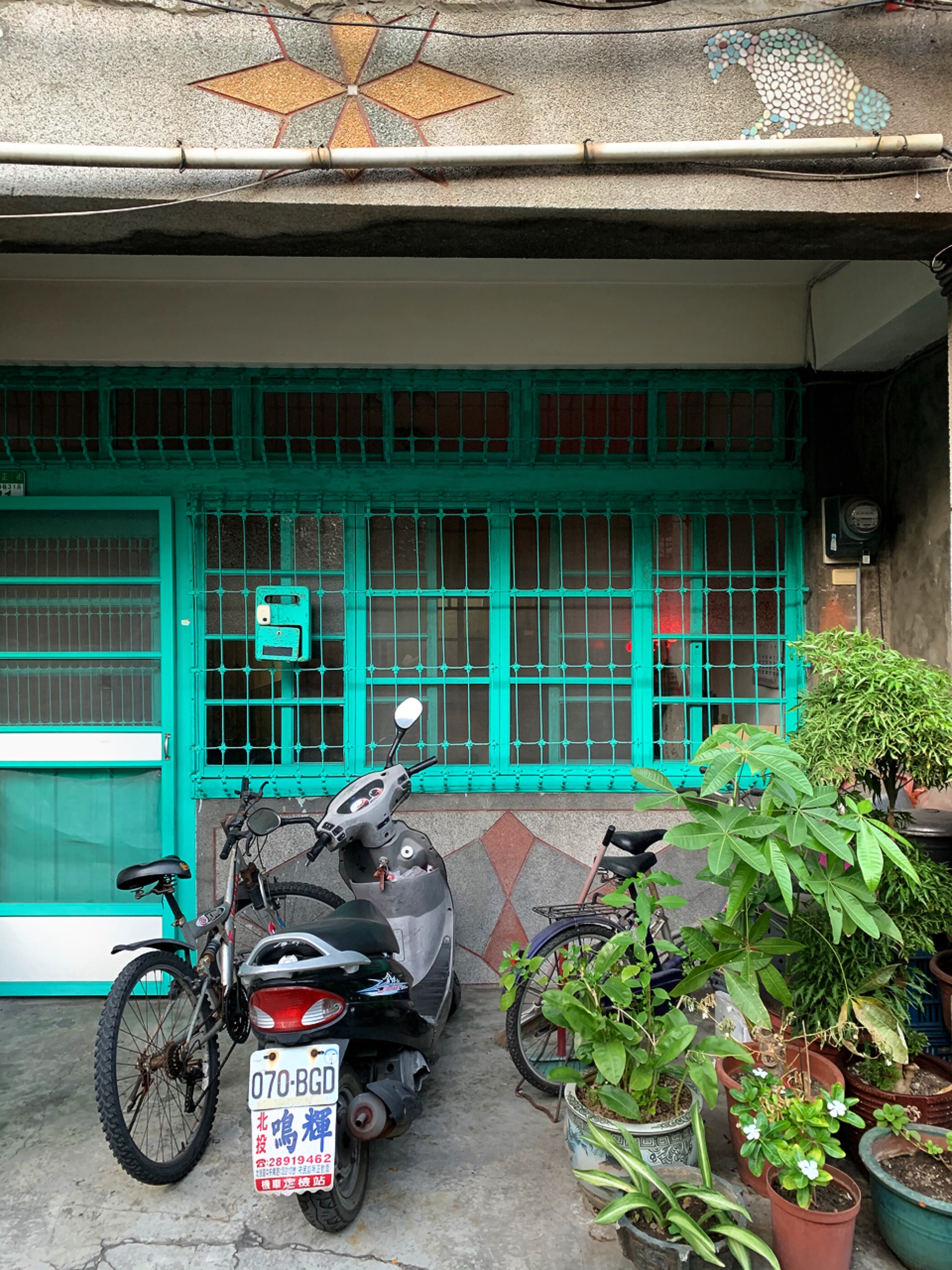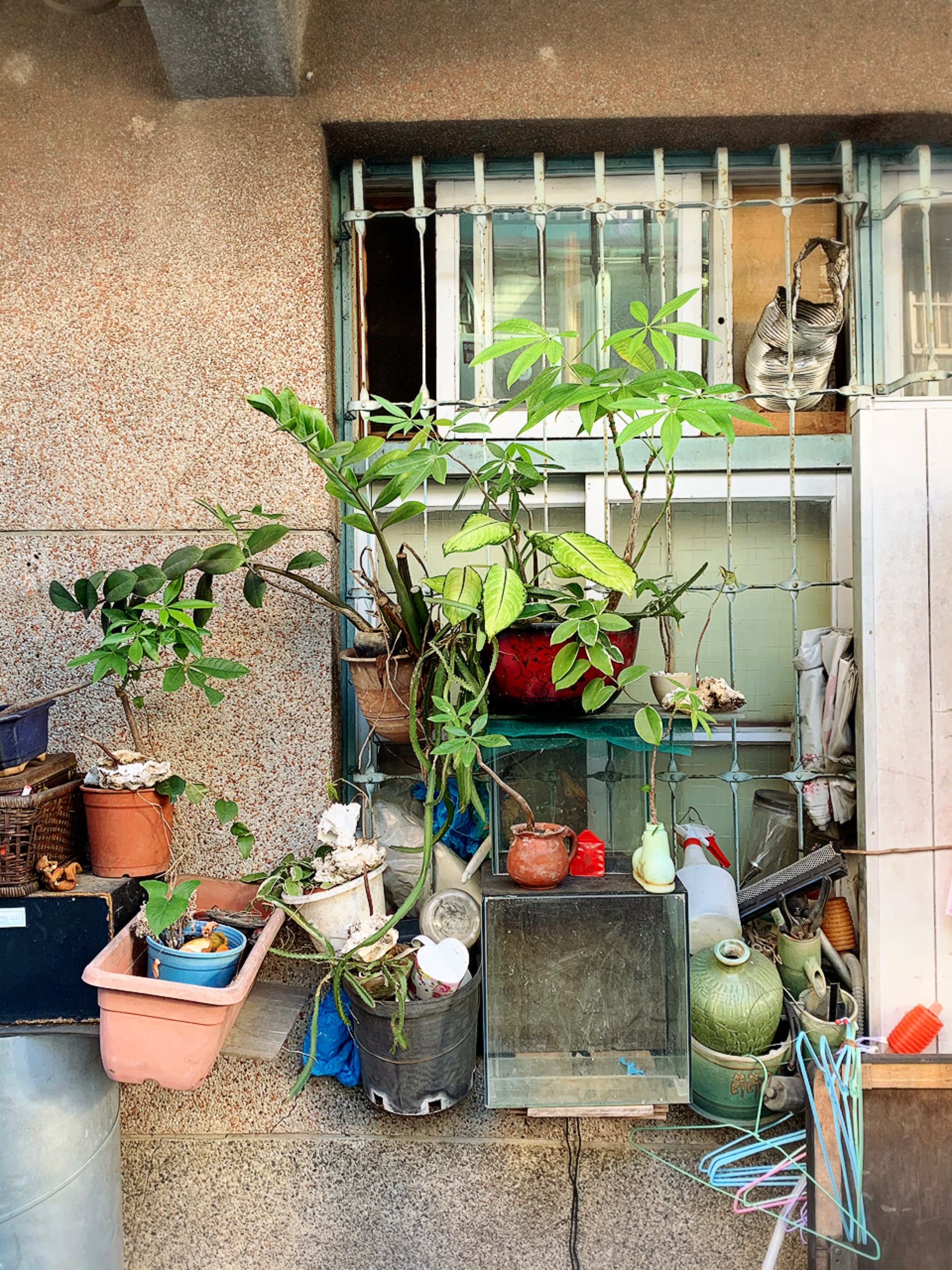
At some point in the past few weeks, I ended up with something called a "Bakers cyst" (discovered by a guy named Baker), which is a fluid cyst that develops when there's too much strain on the knee. Whether it was my trip to Europe - and all the stairs and cobblestones - or going to the gym too much, I have no idea.
In any case, that means minimal stairs, lots of rest and no hiking for awhile. Instead, to get a little easy exercise and enjoy the beautiful weather this weekend, a friend and I headed up to Beitou to check out some of its older architecture. Not Xinbeitou with its glorious Japanese-era pavilions, temples and buildings, but the flat area of Beitou which has no hills that could pose a challenge to my knee.
Beitou doesn't have a wealth of exciting old buildings to see, but its backstreets are pleasantly old-school in a way that reminds me of the quieter parts of Tainan city. There are, however, a few things worth taking a look at if you're in the neighborhood.
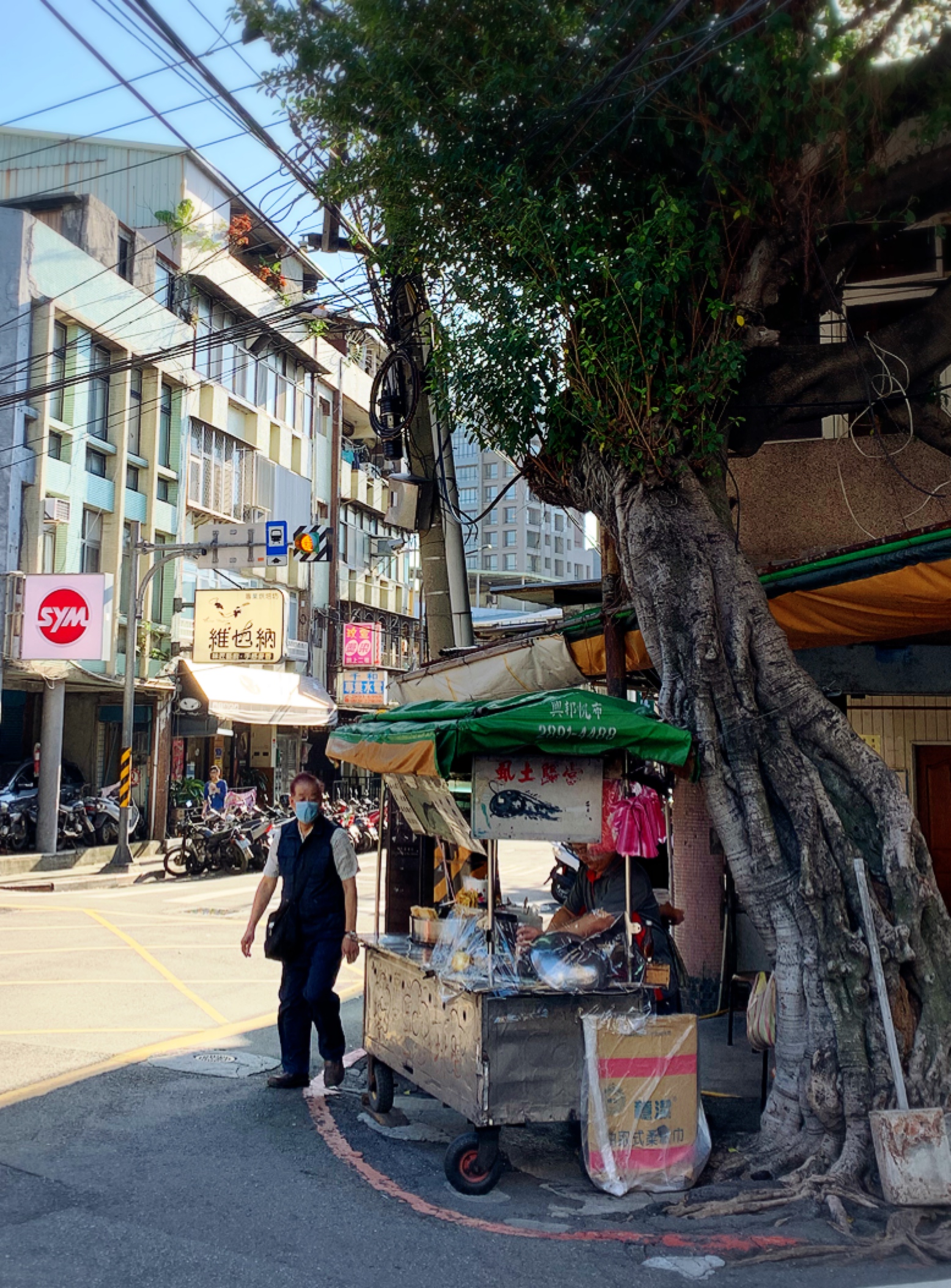
We started out walking towards the Lady Zhou memorial arch, built in the 19th century by local officials to honor Lady Zhou, whose husband died young and who apparently "kept her chastity intact" while taking care of her late husband's parents and raising their children. While I'm not on board with this particular kind of morality, the arch itself is interesting an in an atmospheric little lane next to a quirky temple.
Lady Zhou Memorial Gate (周氏節孝坊) is easy to find on Google Maps.

The lane is pleasant enough that you might feel inclined to relax on one of the stone pylons meant to stop cars from driving under the arch, or sit on the inviting benches of the temple. The temple itself is small and features a variety of scenes from folk stories painted on the bathroom-tile walls.


The houses in this lane are worth your notice as well, although they are not as immediately eye-catching as the baroque shophouses on Taiwan's old streets. Lovely details such as attractively painted window screens, unique bannisters on balconies, plants that give the lane some leafy atmosphere and generally just a quiet neighborhood feel make this area very pleasant. Being extremely close to the MRT, this is the sort of place I'd love to buy someday and renovate with original features intact. Sadly, though these sorts of homes look normal, they're extremely expensive now, well out of my budget (especially considering the sorts of renovations I'd want to do to make the home modern and comfortable but period-appropriate).

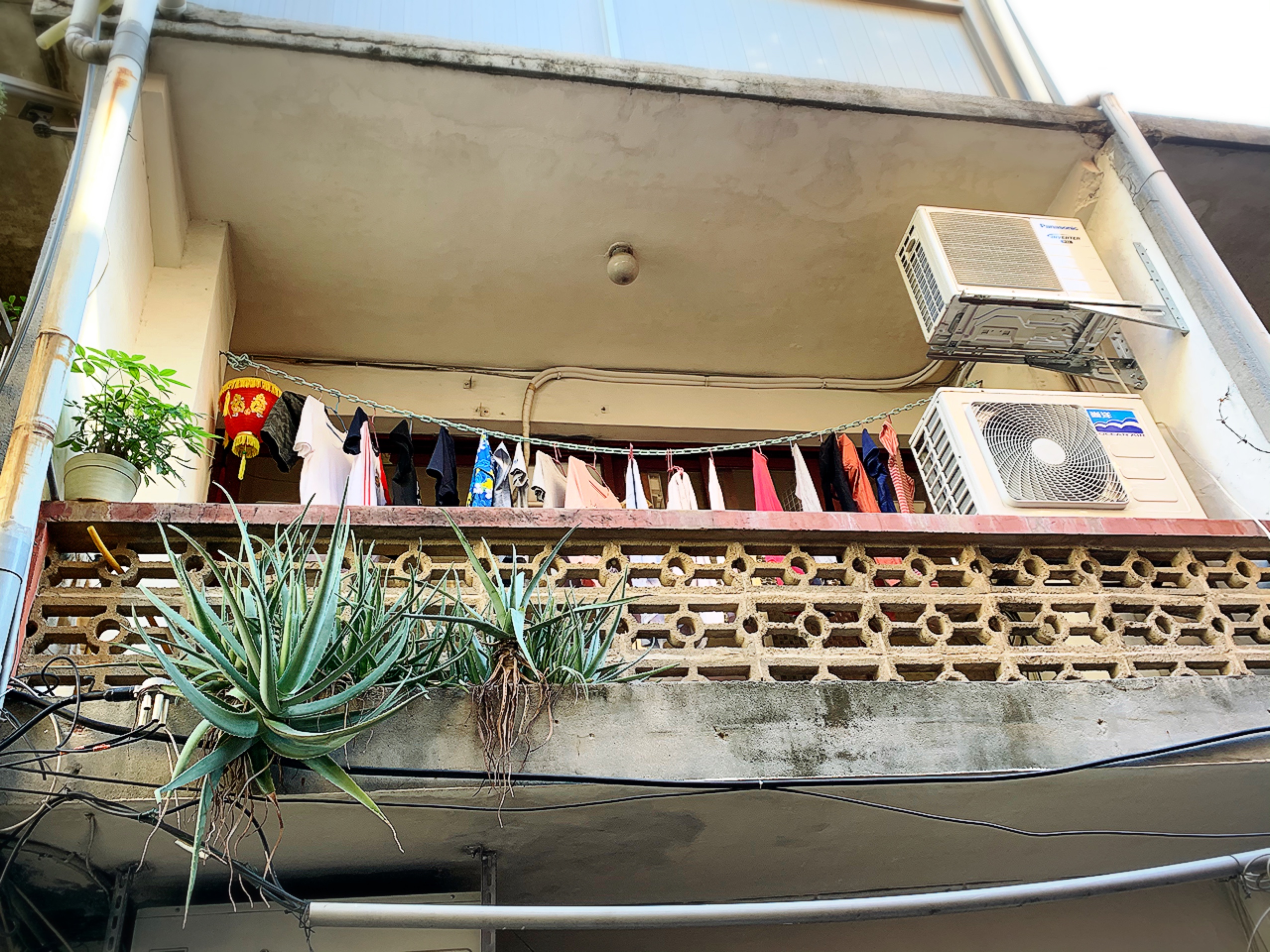
Then we went looking for a few more old houses that were said to still exist on Datong Street nearby. What we found instead was a kind of neighborhood junkyard, and the locals there informed us that the buildings had been torn down some time ago. There was one left in bad condition off to the side, but was basically just a backdrop to heaps of junk at that point. It's a shame, as Beitou could probably bring in more visitors - the kind who are actually interested in local history - if it kept and maintained these sorts of buildings.
Next door, we came across an old temple not on our list, the Chen Family Ancestral Hall (陳氏祠堂, also findable on Google Maps), across the street from the adorable-looking Slipper Cafe. The hall itself is fronted by an attractive old gate, but then you have to pass through a shaded car park. The ancestral worship areas are at the back, behind a locked gate which is surrounded by piles of junk, and near the car park is a place to eat that has a sign extolling the importance of protecting the environment.
Someone from the Chen family, or perhaps just a local uncle hanging out, let us in. The tablets themselves are backed by a pretty cool hand-painted dragon - yes, we asked permission before photographing it.

There are also some lovely old paintings on wooden sideboards and an atmospherically neglected shrine to the right.
It's not a place to go out of your way to visit by any means, but it makes for a pleasant stop on a relaxed city walking day if you happen to pass by. Which, to be honest, is the case with most temples, shrines and ancestral halls.


We then walked up to Beitou Market, which is a bit loud and disorganized but has a few places to eat and at least one tea vendor selling lemon pineapple tea with chunks of pineapple (which was far too sweet but also delicious). There's also a guy selling Oreo and Rocher wheel cakes. Near the market, on Guangming Road very close to the MRT (you can see the station down the road) you'll also pass a few old shophouses from what I guess was once the main market street, which have been taken over by a Cosmed.
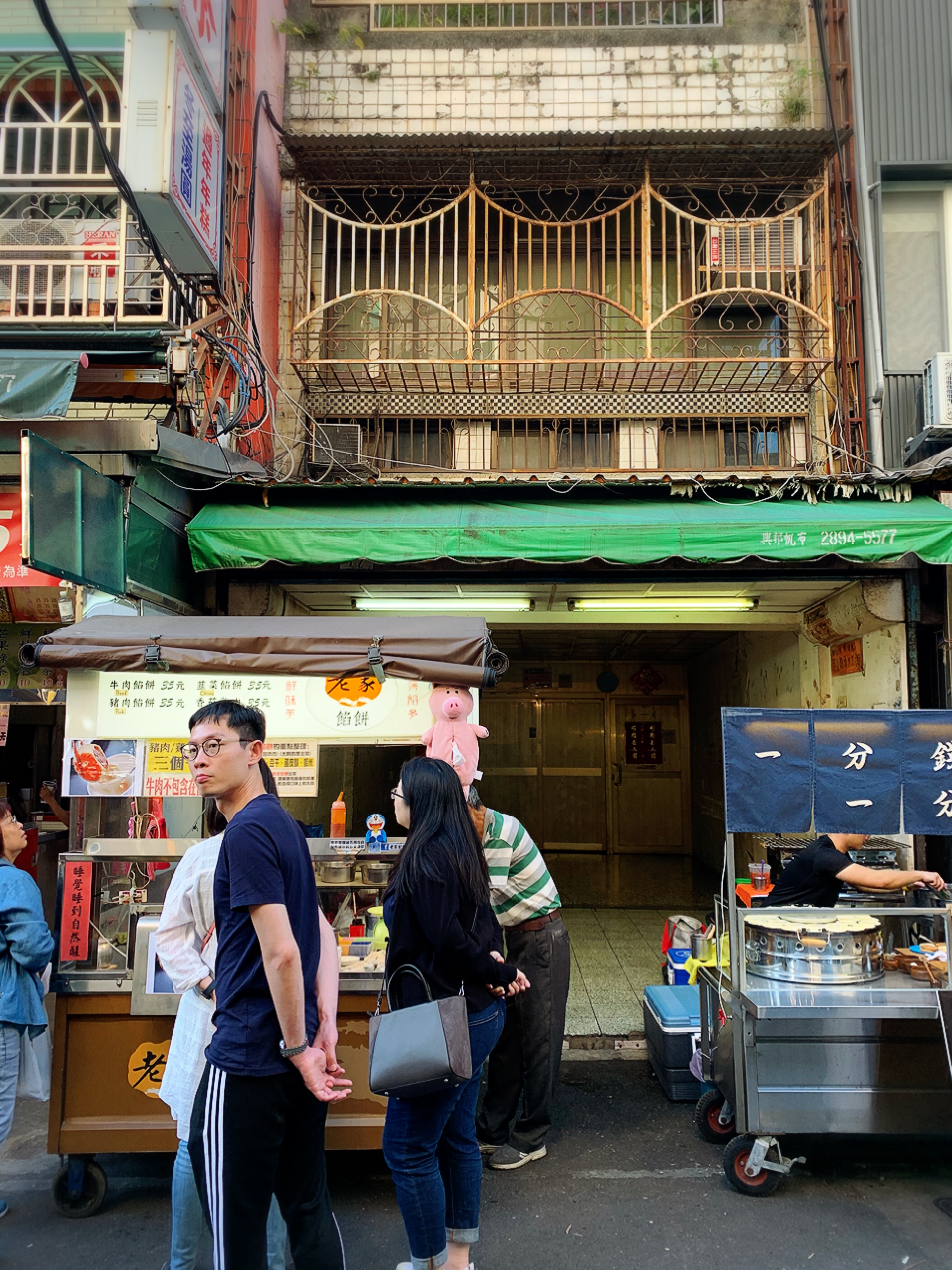
On one hand, I'm happy that these old structures are continuing to be used (and not necessarily turned into yet another tacky tourist shop, not that tourists come to this part of Beitou, as they usually head up the mountain instead). On the other, that is one hell of an ugly sign.
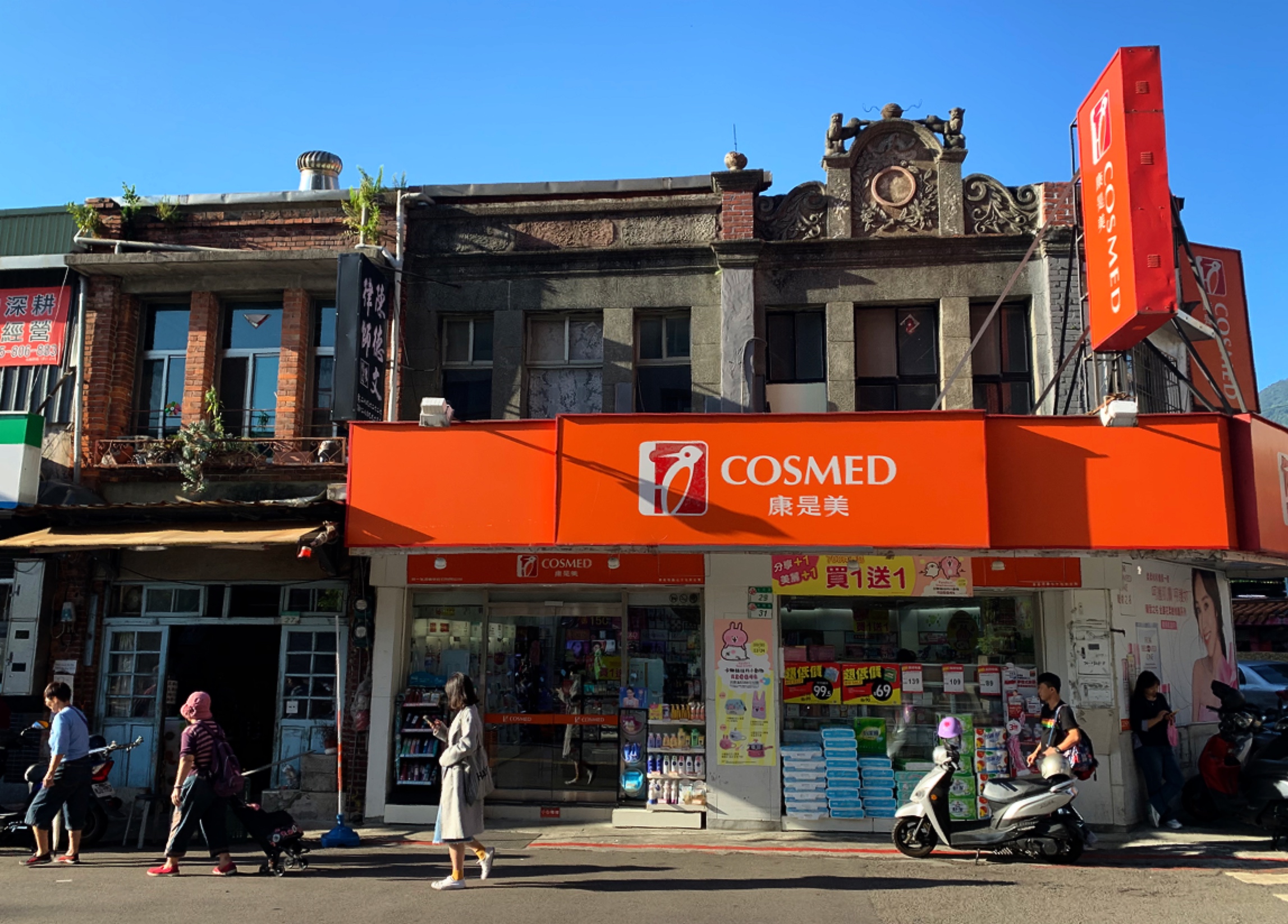
Near Beitou Market is the Beitou Presbyterian Church (長老教會北投教堂), built in 1912 and designed by William Gauld. It's the only surviving 20th-century church designed by Gauld, and its congregation was initially mostly local plains indigenous. It has brick and cement buttresses to protect against earthquakes, but there's no easy way to get in if it's closed (the gate, however, seems to be left open most of the time so you can walk right up to it).
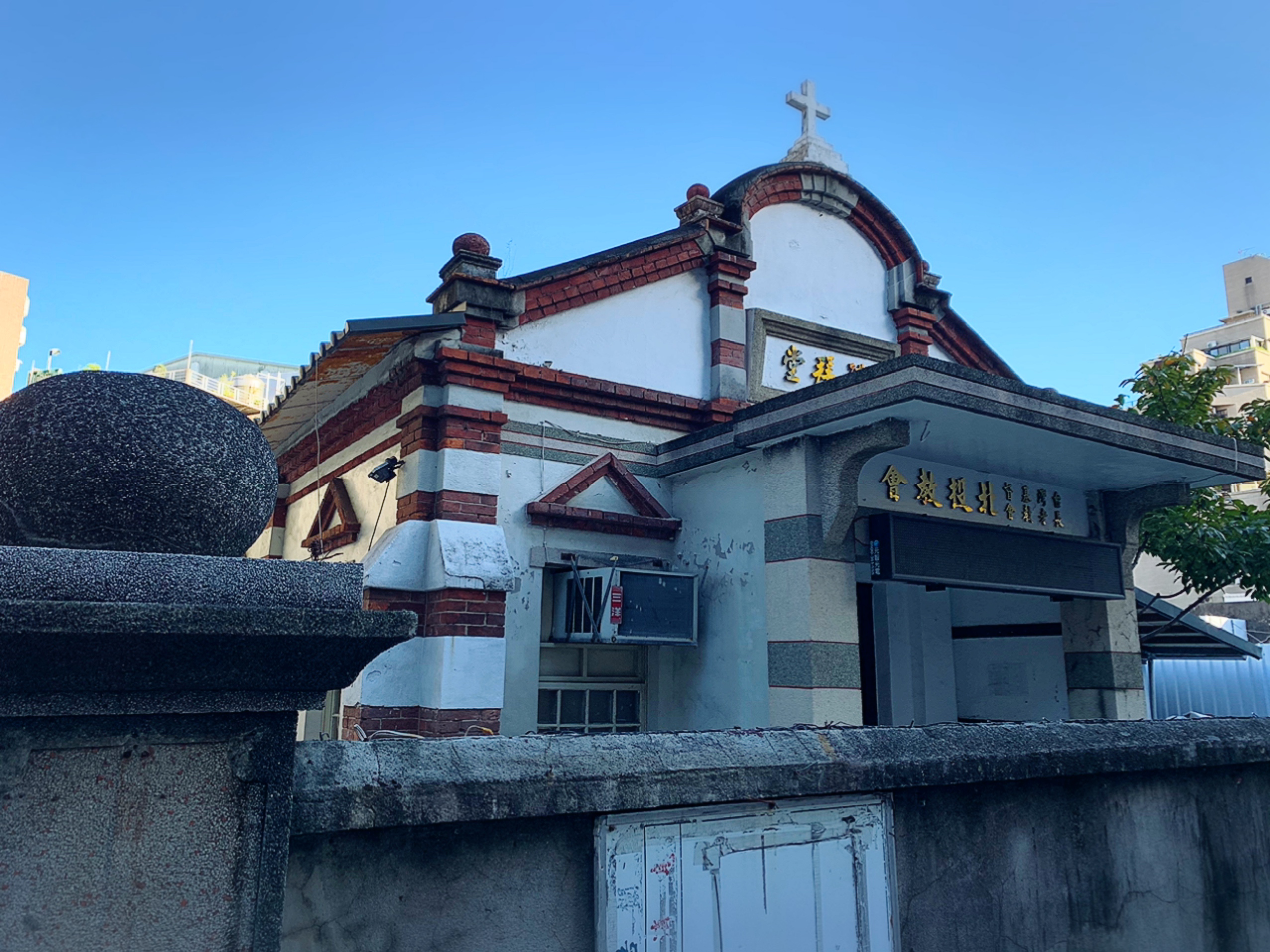
One thing we missed was the old Beitou Granary on Datong Street, not far from the Chen Family Ancestral Hall, simply because I hadn't known it was there until I researched our route a little bit after our walk. Built in the 1930s, it was (as you might guess) a grain distribution center during the Japanese era. Apparently the original wooden roof and the old rice mill are still extant. I guess I'll have to return to check it out.
We then set out for one of the last remaining two-story traditional houses in Taipei, which is down a lane off Qingjiang Road (I believe Lane 113).
The lanes in this area are highly atmospheric and worth a walk on their own, before you get to a dirt path through a small urban farm, past a few old brick houses - some in very poor condition - and one that is still lived in. The main road itself is a bit more hectic but I did appreciate the creepy mannequins in one store.


In this area you can see a lot of structures that were clearly once Japanese-era shophouses but which have been tiled over. While the tile is ugly, I'm happy the structures have survived. I do hope someday the aesthetic trend of removing tiles and refurbishing original exteriors will become more popular (the equivalent of tearing up '80s shag carpet to find hardwood floors underneath).
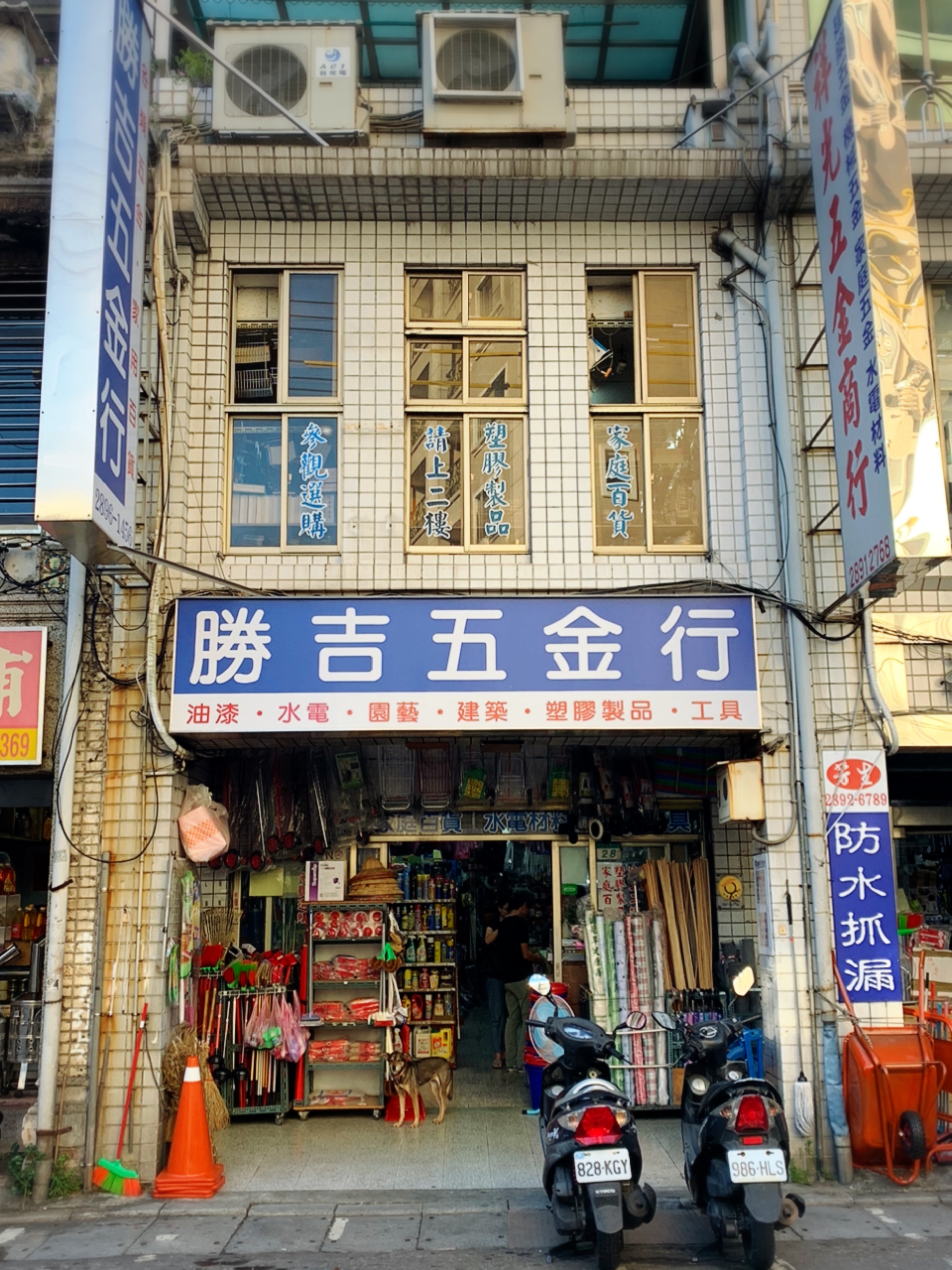
They do have a cute dog though.




Unfortunately, the house itself was not accessible. There was no clear way in, and the path was blocked by another old house with a guardrail around it that was clearly intended to keep trespassers off. This is a section of wall from the outside. At least the slightly overgrown garden area made the whole place very atmospheric in the late afternoon.

As with many traditional Taiwanese houses, it's hard to see what the main house looks like from the road. We're clearly not the first wanderers who've tried to get in, but this person was obviously more successful. Here's what we missed:
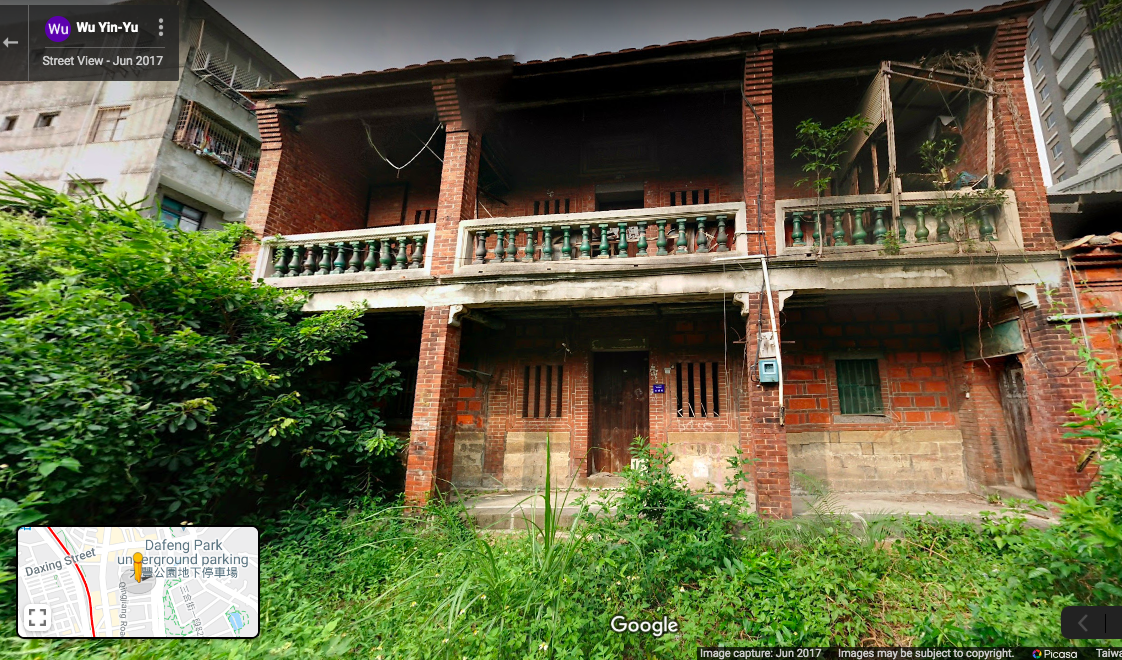
To be honest, after finding this house, we got a little lost, though we never went too far from the MRT. I couldn't really tell you where I took these photos, except to say that they're so close to the MRT that you could hear the signals of the train doors closing, and there's at least one place (closed when we came by) that appears to be a cafe/bookstore/place where hipsters hang out.
Don't worry though, that whole area is atmospheric and if you wander enough, you're sure to come across it.
I especially enjoyed running into the cat, and the mosaic bird detail on some random person's adorable house.
Again, totally the sort of house I'd like to buy and renovate to keep touches like that intact while turning it into a comfortable living space. I have small dreams - I never wanted a mansion - but in my generation, to even do this one needs to be loaded, and it's still a shame that I'm not rich.

